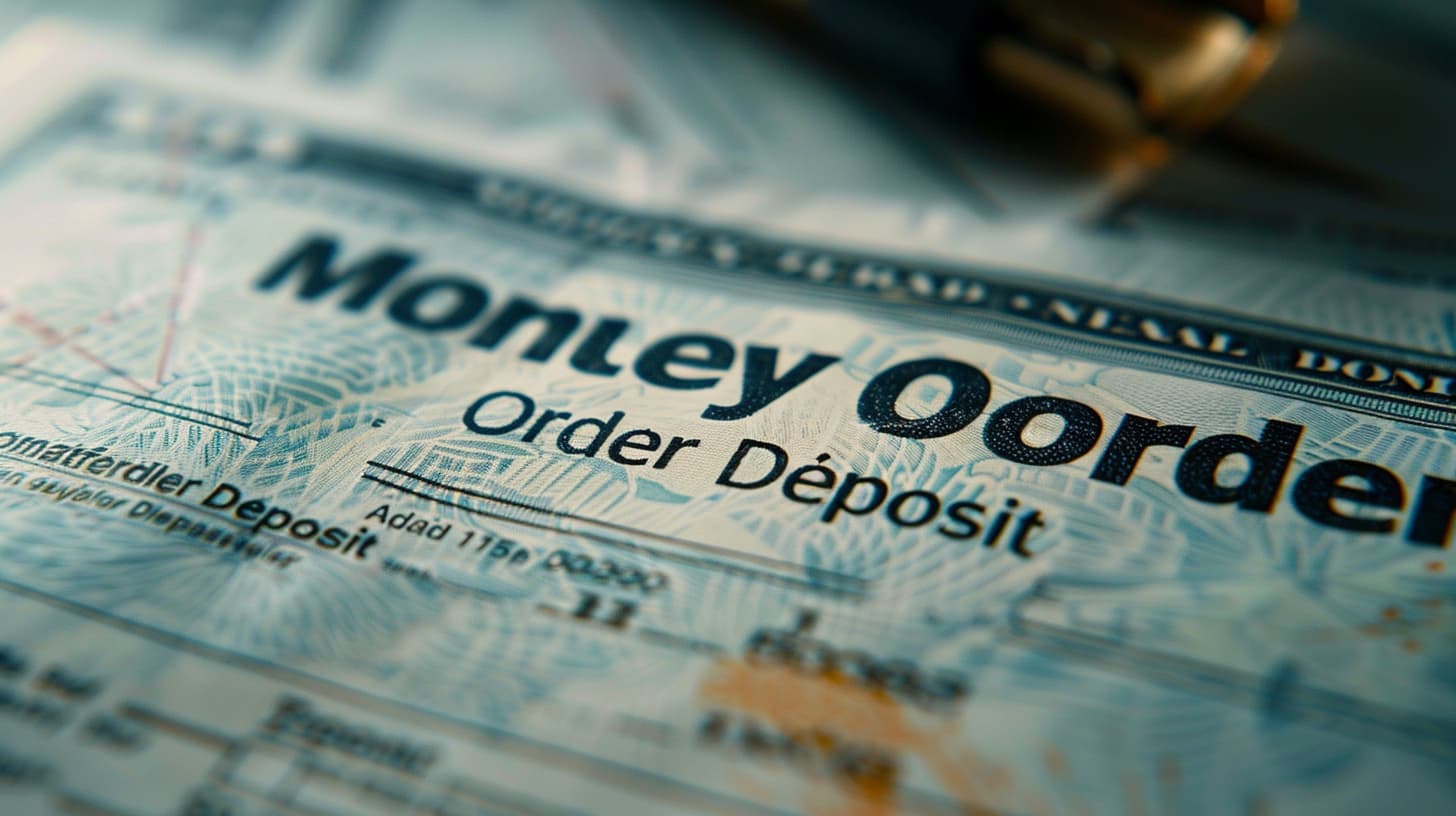If you’ve sent a money order and are uncertain of its status, understanding how to determine if it has been cashed is crucial. Tracking your transactions can provide clarity and peace of mind in financial matters.
By following specific steps and utilizing available resources, you can effectively monitor the progress of your money order. Stay tuned to discover the essential tips and strategies for confirming whether your money order has been cashed.
Understanding Money Order Tracking
When tracking a money order, the first step is to contact the issuer using the details provided on your receipt. Issuers like USPS, MoneyGram, and Western Union have specific procedures for tracking money orders. Each issuer may require different information such as serial numbers and dollar amounts to initiate the tracking process efficiently. It’s crucial to keep your receipt handy as it contains essential details needed for tracking your money order.
USPS, MoneyGram, and Western Union offer various methods for tracking your money order, including customer care calls, online forms, and in-person visits. Understanding the specific requirements of each issuer is vital to successfully track your money order. Differentiating between the tracking procedures of these issuers can help you navigate the process seamlessly.
By following the unique guidelines set by each issuer and providing the necessary details, such as serial numbers and dollar amounts, you can effectively track your money order and ensure that your transaction is monitored accurately.
Initiating Tracking Process
When tracking a money order, the first step is to contact the issuer for assistance. Provide them with key details like the serial number and purchase date.
Utilize online tracking services if available to stay informed about your transaction.
Check Money Order Status
To initiate the tracking process for your money order status, start by gathering the receipt containing the tracking information provided at the time of purchase. Here’s how you can check your money order status:
- Contact the issuer (USPS, Western Union, MoneyGram) for assistance.
- Utilize online tracking services on the issuer’s website with the money order’s serial number.
- Reach out to customer service representatives for updates on the status.
- Maintain detailed records and follow the issuer’s instructions to determine if your money order has been cashed.
Verify Cashed Transaction
Curiously, how can you swiftly confirm whether your money order has been cashed by initiating the tracking process? Begin by gathering the receipt containing the money order’s serial number.
Contact the issuer of the money order to inquire about its cashing status. Some issuers offer online tracking services for easy verification. Remember to provide details such as the money order’s amount and purchase date when tracking the transaction.
Be ready to complete any necessary paperwork and follow the issuer’s instructions for verifying cashed transactions. By following these steps diligently, you can efficiently track and verify the cashing status of your money order.
Gathering Necessary Information
In order to gather the necessary information for tracking a money order transaction, start by collecting the serial number, dollar amount, and purchase date from the money order receipt. This data is crucial for effectively monitoring the status of your money order.
Here are some key steps to help you ensure you have all the essential details:
- Serial Number: The unique identifier assigned to your money order is vital for tracking its journey and verifying its status.
- Dollar Amount: Knowing the exact monetary value of the money order is essential for accurate record-keeping and identification.
- Purchase Date: The date when the money order was acquired is important information that may be needed when tracking its progress.
- Issuer’s Contact Information: Having the issuer’s contact details handy will enable you to reach out for assistance in tracking the money order.
Noting Important Details
You need to pay close attention to key transaction details when dealing with money orders. Make sure to jot down the serial number and dollar amount, and keep the receipt handy with all necessary information.
It’s crucial to document unique features, record purchase locations, and retain all related correspondence for effective tracking.
Key Transaction Details
To effectively track money order transactions, it’s crucial to carefully note down key details such as the serial number, dollar amount, and date of the money order. Here are key transaction details to focus on:
- Serial Number: Unique identifier for the money order.
- Dollar Amount: The exact value of the money order.
- Date: The date the money order was issued.
- Issuer: The entity that issued the money order.
Monitoring Cash Status
When monitoring the cash status of your money order, ensure to meticulously note down all important details for accurate tracking. Keep the receipt with tracking details, including the serial number, dollar amount, and issuer of the money order.
Retain a copy or image of the money order for reference in case of cashing. Record recipient details and the purpose of payment as additional information.
To monitor the status of your money order, contact the issuer for updates on its cashed status. By maintaining a comprehensive record of these essential details, you can effectively track the progress of your money order and ensure that it reaches the intended recipient securely.
Payment of Service Fees
Payment of service fees for tracking and processing money orders may vary depending on the issuer. When dealing with money orders, it’s crucial to understand the costs associated with tracking and processing to avoid any surprises.
Here are some key points to consider regarding service fees:
- Issuer Variability: Different issuers like USPS, MoneyGram, and Western Union have distinct service fee structures.
- Cost Impact: Service fees for tracking and processing money orders can influence the total cost of using this payment method.
- Applicability: It’s essential to be aware of any applicable service fees when engaging in money order transactions.
- Fee Awareness: Stay informed about the service fees imposed by the issuer to accurately calculate the overall expenses associated with your money order activities.
Contacting the Recipient
Contact the recipient directly to inquire about the cashing status of the money order. Request confirmation from the recipient if they have received and cashed the money order. Provide the recipient with necessary details like the money order number and amount for verification. Communicate with the recipient to ensure the money order has been successfully processed. Check with the recipient to confirm if the funds from the money order have been received.
| Money Order Number | Amount |
|---|---|
| XXXXXXXX | $XXX.XX |
When contacting the recipient, make sure to have the money order number and amount on hand for reference. This information will help in confirming the cashing status and processing of the money order. Clearly communicate with the recipient to ensure a successful verification process. Prompt and accurate communication will help in determining if the funds have been received. By reaching out directly, you can efficiently gather the necessary details for confirming the cashing status of the money order.
Consideration for Waiting Period
Consider waiting patiently during the designated period specified by the issuer before taking further steps to trace a money order. This waiting period is essential for the processing of the money order and allows sufficient time for it to be cashed. By adhering to the waiting period, you can streamline the tracing process effectively.
- Respect the Designated Waiting Period: The waiting period specified by the issuer is crucial for ensuring the money order has been processed and cashed.
- Avoid Premature Action: Taking action before the waiting period elapses can disrupt the tracing process and lead to unnecessary complications.
- Trust the Issuer’s Process: Issuers have specific procedures in place to handle tracing requests efficiently, which are optimized when the waiting period is respected.
- Enhance Effectiveness: Patience during the waiting period can streamline the tracing of a money order, making the process more effective and yielding quicker results.
Tracking Money Orders From Different Issuers
When tracking money orders from different issuers, be sure to familiarize yourself with their specific tracking procedures and requirements.
The United States Postal Service (USPS) charges $6.95 for researching a money order, with a resolution time ranging from 30 to 60 days.
MoneyGram offers tracking through customer care calls, online forms, and in-person requests, while Western Union requires verifying cashing status over the phone, sometimes with a $30 administrative fee.
Other issuers, such as grocery stores and check-cashing stores, may provide simpler tracking processes.
It’s crucial to gather all necessary information and forms required by each issuer to accurately track your money order. Understanding the fees, resolution times, and methods of tracking for USPS, MoneyGram, Western Union, and other issuers will help you efficiently monitor the cashing status of your money order.
Handling Cashed Money Orders
If you’ve recently had a money order cashed, it’s crucial to handle the transaction with care and attention to detail. Here’s how to manage a cashed money order effectively:
- Keep the money order receipt: This serves as proof of purchase and contains essential tracking information.
- Verify the cashed status: Contact the issuer or use online tracking services to confirm if the money order has been cashed.
- Utilize issuer assistance: Companies like USPS, Western Union, and MoneyGram can help track cashed money orders efficiently.
- Retain the money order stub: This document is vital when inquiring about the cashed status; use the serial number and exact dollar amount to confirm if the money order has been cashed.
Frequently Asked Questions
How Do I Know if Money Order Has Been Cashed?
To know if your money order’s cashed, check the issuer’s website or call customer service. Use the serial number on your receipt for verification. Services like USPS, Western Union, and MoneyGram offer online tracking.
How Can I Track My Money Order Status?
To track your money order status, contact the issuer or use their online tracking service with the serial number. Keep the receipt for reference. Confirm if the money order has been cashed through the issuer and reach out for updates.
What Does It Mean When a Money Order Has Been Sold but Not Cashed?
When a money order has been sold but not cashed, it means the recipient hasn’t converted it to cash yet. The funds remain secure until redeemed. You can track its status through the issuer.
Are Money Orders Cashed Instantly?
Money orders are not cashed instantly. The process can take days to weeks, depending on the recipient and the financial institution. Once cashed, money orders are considered guaranteed funds. Contact the issuer or recipient’s bank for tracking.
Conclusion
Now that you’ve learned how to track your money order, remember to keep your receipt safe and follow up with the issuer if needed.
Stay proactive in monitoring your transactions to ensure your money order has been cashed successfully. If you encounter any issues, don’t hesitate to reach out to the issuer for assistance.
Keep track of important details and stay informed throughout the process. Happy tracking!
Related Resources




